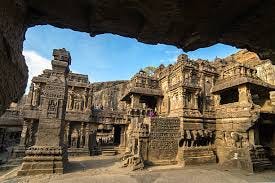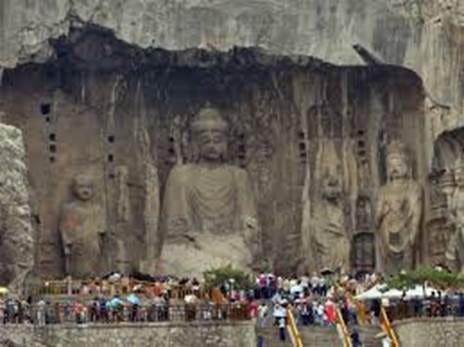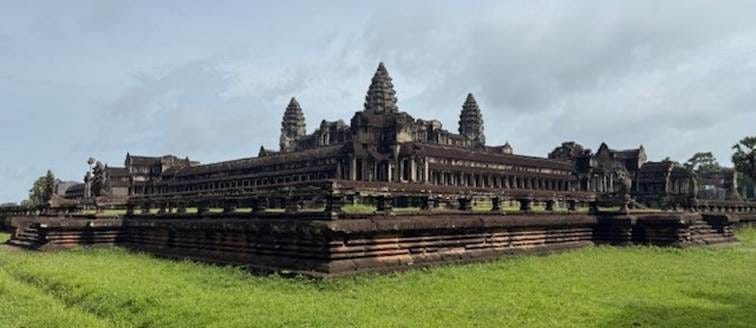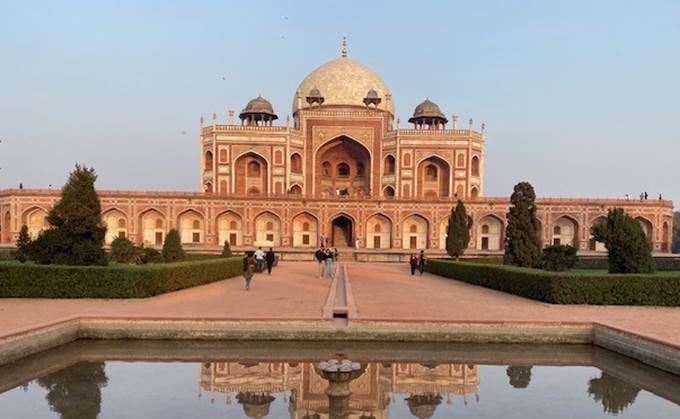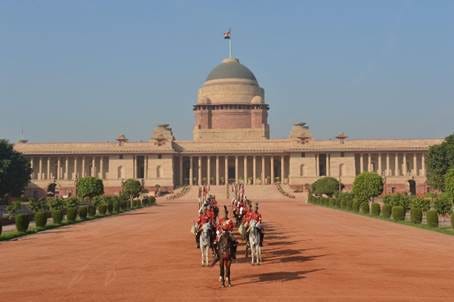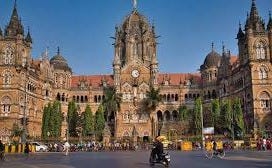An Architectural Journey Through History & Religion in India And East Asia
For someone visiting India for the first time the sheer variety of architectural styles, from the Sanchi Stupa to the breath-taking rock cut beauty of Ajanta and Ellora caves to the temples of South India to Mughal monuments like Taj Mahal and Sikri, to the British colonial blend of Indo-Saracenic influence, presents a dizzying array of contrasts that are hard to fathom unless one views them through the lens of history and cultural evolution over the course of more than two millennia.
Ajanta Caves. Image courtesy: Shutterstock
It would not be incorrect to say that architecture holds a mirror to the history and prevalent cultural ethos of the time.
India’s national poet, Dinkar1, has beautifully described how India’s cultural evolution is split into four phases – Proto historic Hindu period, Buddhist period, Mughal Period and British colonial & post-colonial period. The influences of these distinct periods permeated all aspects of social life from social mores to architecture to literature & poetry. Proto-historic Hinduism was not so much about deity worship or building grand temples as it was about nature worship and animism. After the advent of Buddhism both the Hindu kings (kshatriyas) and the lower castes (shudras) found respite there from the rigid “varna”(caste)-based boundaries imposed by Manu’s laws and a dominant Brahmanical system. This early tension between the hitherto dominant brahmans and rapidly ascending Buddhist is evident in the dramas set in that period2. An architectural Cambrian explosion of sorts was set off by the Mauryan emperor Ashoka who embraced Buddhism in the third century BCE. Ashoka made it his life’s mission to spread Buddhism not only in India but in Sri Lanka and East Asia as well. This spread was accompanied by a construction boom that continued for many centuries. The Tang-Zhou empress Wu Zetian embraced Buddhism and built the magnificent Vairocana Buddha statue in Longmen grottoes (present day Henan province, China) in seventh century CE.
Longmen grottoes. Image courtesy: Wikipedia
The magnificent temples of Angkor Wat, in present day Cambodia, were built at the beginning of the second millennia by the Khmer kings who ruled over an empire which could arguably be considered the most powerful and richest of its time3. Angkor Wat was initially dedicated to the Hindu god, Vishnu, but as the tide turned, was converted to a Buddhist monument.
Angkor Wat (“Temple City” - Khmer via Sanskrit & Pali). Image courtesy: Self
The Mughal invasion, in early 16thcentury, saw an infusion of Persian-Turkic style with geometric patterns laid out in perfect symmetry and use of red sandstone and marble as the primary construction material. Couple of other distinguishing features of Mughal architecture were the large central dome (evolution of a stupa?) and surrounding minarets. This was a stark departure from using rock carving or rock-derived material in construction. Some of the most famous exemplars of Mughal architecture like Taj Mahal or Humayun’s tomb can be seen as allegorical manifestations of garden of heaven and are heavy on symbolism4.
Humayun’s Tomb, Delhi. Image courtesy: Self
British colonial architecture combined elements of existing Indian architectural precepts with European Neoclassical principles in an Indo-Saracenic style that is epitomized by the Rashtrapati Bhavan (President’s House) in New Delhi. With a large central dome, inspired by Mughal architecture and a colonnaded façade that is straight out of the Neoclassical playbook, it represents a perfect blend of contrasting yet perfectly syncretized styles.
Rashtrapati Bhavan (President’s House, Delhi)
Image courtesy: Government of India
CST rail terminus (erstwhile VT – Victoria Terminus) in Mumbai is another great example of a blend of Europe-inspired Gothic revival with Mughal-inspired dome and turret design elements.
CST Mumbai. Image courtesy: Times of India
References:
1 – “Sanskriti Ke Chaar Adhyaye” (Four Chapters of Indian Culture) – Ramdhari Singh “Dinkar”
2 – Mudrarakshasha (“The Seal of Minister Rakshasha”) by Vishakhadutta. Chandragupta by Jaishankar Prasad
3 – The Golden Road by William Dalrymple
4 – Architecture of Mughal India by Catherine B. Asher


